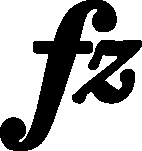



GEF - German edition by Fontana
| Publisher: | Ad. Mt. Schlesinger |
| Date: | VII 1855 |
| Title: | Œuvres Posthumes || IIe Polonaise |
| Dedication: | None |
General characteristics of Fontana's editions – see FEF.
GEF and FEF differ in minor details, which excludes their being based on different base texts. Some features, among others, graphic improvements of GEF in relation to FEF suggest that the first one was based on the second one, e.g.:
- slur-like lines in the R.H. in bar 15 and analog., in FEF embracing semiquaver groups, yet raising doubts concerning their meaning, in GEF have form of clear ties sustaining the g1 note. The engraver of GEF could have considered the slurs of FEF as awkwardly placed ties, however, it is difficult to imagine a reverse situation, in which the engraver of FEF makes unfathomable distortions of diligent ties of GEF;
- the stems of the sixths ending the phrase in bar 24 and analog. point downwards in FEF, which is characteristic for Chopin notation, yet contrary to the rules obeyed by engravers. In GEF the direction of the stems is compatible with the rules of notation, which would not make the engraver of FEF to change it if he worked on the basis of GEF;
- the slurs at the transitions between bars 24-25 and analog. are placed more skillfully in GEF than in FEF, which also points into the direction of dependencies between both editions.
On the other hand, a number of more significant essential differences indicates another proofing of FEF, already after GEF had been completed. First of all, they are the following:
- in GEF, trills' endings are missing in bars 26, 28, and 30 (also in the Da Capo part, in total six places) – it is impossible that the engraver of GEF omitted the same element six times;
-
in GEF, there is no
 in bars 28 and 30 – also in this case adding indications in the proofing of FEF seems to be much more probable than omitting them in GEF;
in bars 28 and 30 – also in this case adding indications in the proofing of FEF seems to be much more probable than omitting them in GEF; - the change of dots holding semiquavers on demisemiquaver rests in bars 54 and 90 made in FEF (one can see traces in print).
After combining those pieces of information, we receive a scheme of correlations between FEF and GEF proposed by us: GEF was based on the review copy of FEF before introducing last corrections. Those conclusions are confirmed by the comparison of both versions of EF of other pieces from the collection Œuvres posthumes. However, one must realise that the presence of the slur in the L.H. in bar 76 in GEF is difficult to explain in the framework of the scheme.
GEF is known in few versions which differ in the details of the cover or other details which do not have any relation to the musical text. The presented copy comes from the second impression of the version published separately, probably from 1858-1859.
| Original in: | Biblioteka Uniwersytecka, Toruń |
| Shelf-mark: | III 2066 |
